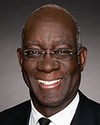The situation you describe is not unusual. It is happening across Canada because of the popularity of immersion programs. Over the last five years, the number of students in immersion programs has increased by 20%. Last year, we began research into the shortage of teachers of French as a second language. We chose to do it in Vancouver because immersion is very popular there, as it is in British Columbia. In fact, it is popular across Canada. The teacher shortage is the first limitation.
Also, school boards very often try to limit enrolment. In some areas, lotteries are used to assign spaces. In my opinion, the federal government supports the teaching of French as a second language through the action plan for official languages. It has even provided funding to try to address the shortage of teachers, both of French as a second language and of French as a first language.
We must never forget the role of the provinces in education. It is extremely important. Every student must be able to receive provincially funded education. Any additional costs are often supported through education agreements. If we are not able to provide quality second-language training, it has an impact on the bilingualism rate. In fact, we can see that it has not increased much over the last seven or eight years. This is the challenge facing Canada. It makes it difficult to find bilingual personnel, whether in government, at Air Canada or anywhere else. The need for bilingual staff is phenomenal. For me, that's all about education. So we have to ask ourselves what is the best way to support second-language education.
My time is up, I think.




